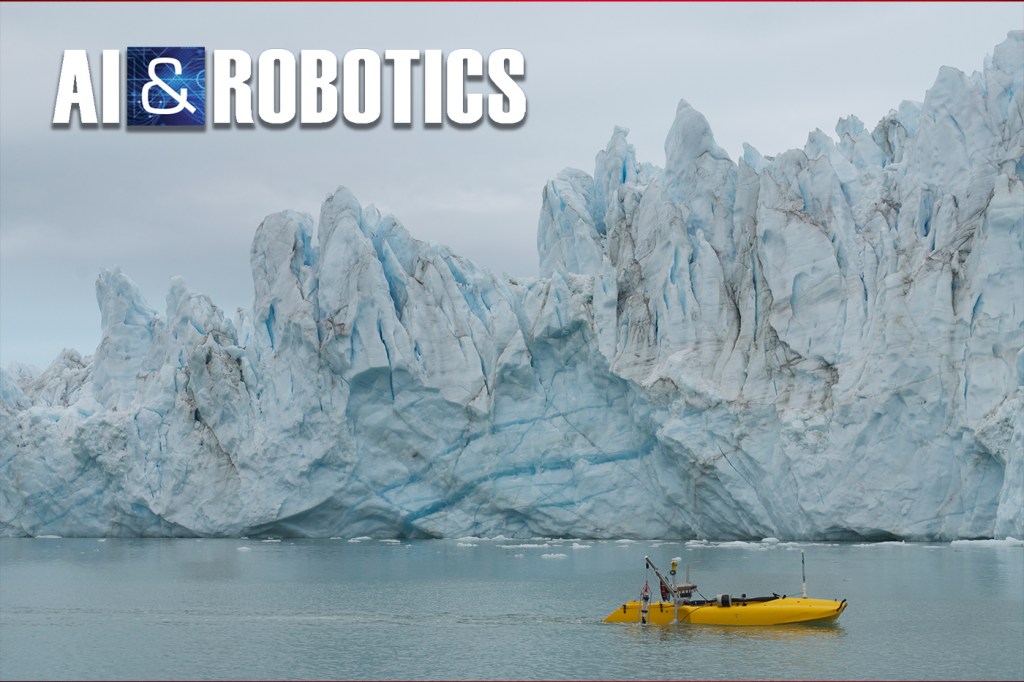Scientists use underwater robot created by Northeastern researcher to spy on zooplankton at night

Zooplankton are the foundation of the marine food chain. These tiny organisms provide food and energy to fish, sea birds, and other marine mammals—including the bowhead whale, which feeds exclusively on zooplankton. What do zooplankton eat? They feed on phytoplankton, which rely on sunlight.
But in the Arctic Ocean during winter months, there is little to no light. Still, scientists have observed that zooplankton migrate from the deep ocean up to the surface. But this phenomenon is difficult to study. Most research vessels produce light pollution, or artificial light, which alters the zooplanktons’ natural behavior.
That’s why this has been fantastic, to see us build these robots that people all over the world now are using very effectively in cool ways that we never would have thought of.
Hanumant Singh
Enter Hanumant Singh, professor of electrical and computer engineering at Northeastern, who builds robots like the Jetyak, an autonomous vehicle that’s shaped like a kayak and includes a gas-powered engine. Now, one of the more than a dozen Jetyaks Singh has designed for researchers around the world is being used to spy on zooplankton.
“What’s been interesting is that the Norwegians went and did something very cool with the Jetyak,” Singh said, referring to a project led by Jørgen Berge at the Norwegian University of Science and Technology. In a paper published Wednesday in the journal Science Advances, Singh and his colleagues describe a breakthrough in Berge’s ability to examine zooplankton migration in the Arctic polar night.
“For the first time, we were able to unequivocally document and quantify zooplankton behavior in relation to the natural ambient and extreme low-light climate,” Berge said. He and his colleagues compared data the Jetyak collected with measurements taken in the light-polluted environment near their main research vessel and found that zooplankton hide from artificial light. Based on this discovery, Berge said it’s impossible for scientists aboard traditional vessels to examine the organisms’ natural rhythms within the upper 100 meters of the ocean.
Understanding how zooplankton respond to changes in light is important, especially as climate change causes a reduction in sea ice covering the ocean.
“Most Zooplankton will forage in the surface layers in the cover of darkness at night, then migrate down to depth when the sunlight returns in the morning,” Berge said. “This process is characteristic of all the oceans and most lakes in the world. It is by far the largest synchronized movement of biomass on the planet.”

Researchers deploy the Jetyak into the Arctic Ocean. Photo by A.Sørensen.
Understanding the implications of this synchronized migration will require the use of more autonomous vehicles. Creating those vehicles is one way Northeastern is advancing research across the globe, Singh said.
“It’s that kind of collaboration we want to foster. You don’t need to re-invent this wheel. It’s already done. Go ahead and use what we’ve created and see what you get out of it,” Singh said. Other robots he’s designed have been used to survey coral reefs, search for deep sea hydrothermal vents, and study ice cover in the Arctic.
“That’s why this has been fantastic, to see us build these robots that people all over the world now are using very effectively in cool ways that we never would have thought of.”





